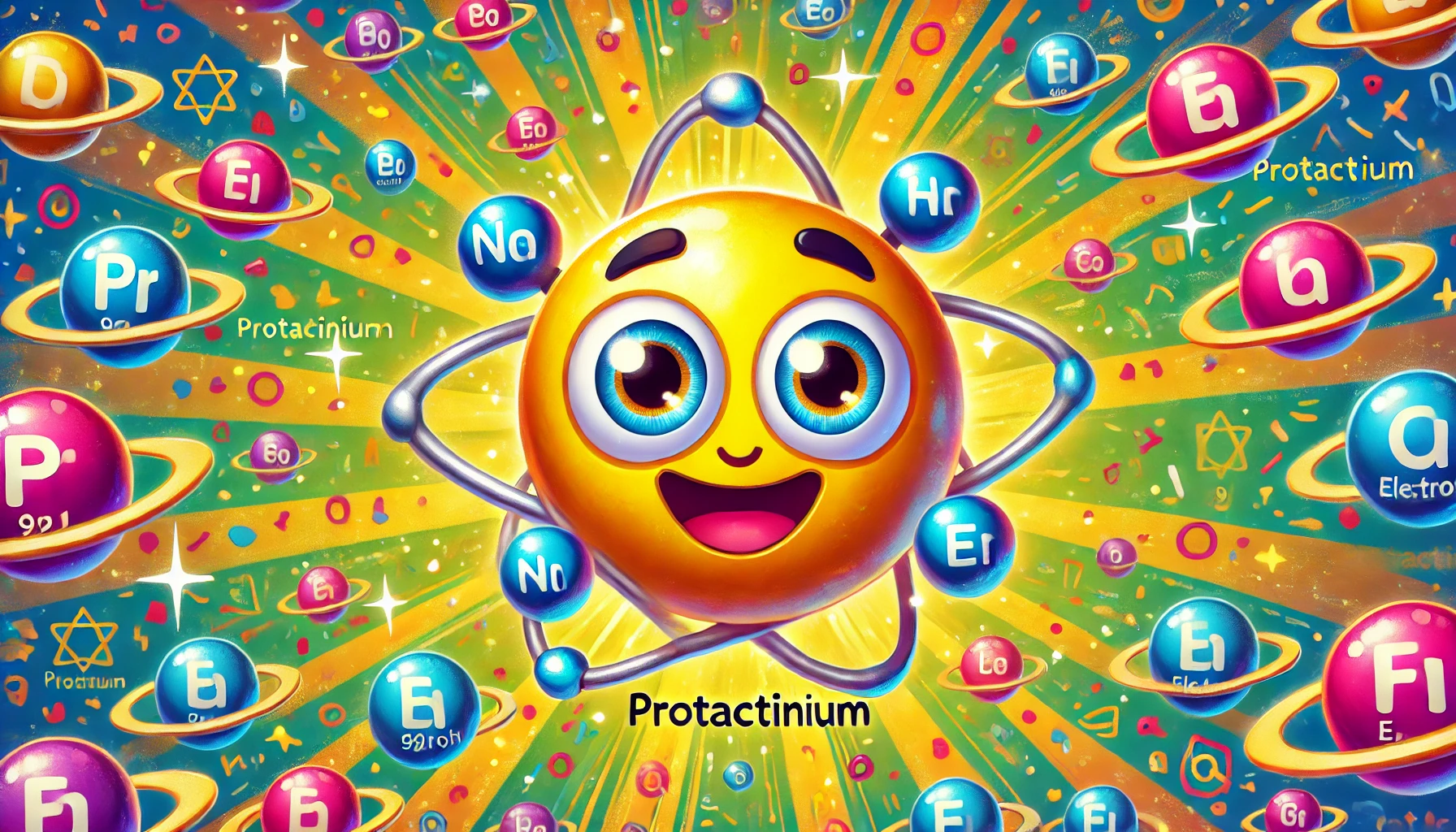Understanding Protactinium: Properties, Uses, Health Risks, and Fascinating Facts
Understanding Protactinium: Properties, Uses, Health Risks, and Fascinating Facts
Table of Contents
- Introduction to Protactinium
- Properties of Protactinium
- Uses of Protactinium
- Health Risks of Protactinium Exposure
- Interesting Facts about Protactinium
- Environmental Impact of Protactinium
- Conclusion
- References
Understanding Protactinium: Properties, Uses, Health Risks, and Fascinating Facts
Introduction to Protactinium Protactinium is a chemical element with the symbol Pa and atomic number 91. It is a rare and highly radioactive metal that is part of the actinide series. Discovered in the early 20th century, protactinium has limited but significant applications in scientific research. This article explores the properties, uses, health risks, and interesting facts associated with protactinium, providing a comprehensive understanding of this rare element.
Properties of Protactinium Protactinium is characterized by several distinct physical and chemical properties.
Physical Properties
- Appearance: Protactinium is a dense, silvery-gray metal that tarnishes when exposed to air, forming a thin oxide layer.
- Density: The density of protactinium is 15.37 g/cm³.
- Melting Point: Protactinium has a melting point of 1,572°C (2,862°F).
- Boiling Point: The boiling point of protactinium is approximately 4,026°C (7,280°F).
Chemical Properties
- Reactivity: Protactinium is chemically reactive and can form compounds with various elements, including oxygen, halogens, and sulfur.
- Compounds: Protactinium forms various compounds, such as protactinium oxide (PaO₂), protactinium fluoride (PaF₄), and protactinium chloride (PaCl₅).
Uses of Protactinium Due to its high radioactivity, protactinium has limited practical applications. However, it holds significant value in scientific research.
Scientific Research
- Nuclear Studies: Protactinium is used in nuclear research to study the properties and behavior of heavy elements, particularly those in the actinide series.
- Geochronology: Protactinium-231, a radioactive isotope, is used in uranium-thorium dating to determine the age of marine sediments and to study ocean circulation patterns.
Potential Applications
- Nuclear Reactors: While not currently in widespread use, protactinium has been studied as a potential nuclear fuel due to its ability to breed uranium-233 when irradiated with neutrons.
Health Risks of Protactinium Exposure Protactinium is highly radioactive, and exposure can pose significant health risks.
Inhalation and Ingestion
- Radiation Poisoning: Inhalation or ingestion of protactinium can cause severe radiation poisoning, with symptoms including nausea, vomiting, hair loss, and damage to internal organs.
- Bone Accumulation: Protactinium behaves similarly to calcium in the body and can accumulate in bones, leading to bone fractures, necrosis, and increased cancer risk.
Skin and Eye Contact
- Radiation Burns: Direct contact with protactinium can cause severe radiation burns on the skin.
- Eye Damage: Exposure to protactinium dust or vapors can cause eye damage and potential blindness.
Chronic Exposure
- Cancer Risk: Prolonged exposure to protactinium increases the risk of developing various cancers due to its high radioactivity.
Interesting Facts about Protactinium Protactinium has several intriguing aspects that make it an interesting element.
Discovery
- Discovered in 1913: Protactinium was independently discovered by two groups of scientists: Kasimir Fajans and Oswald Helmuth Göhring, and Frederick Soddy and John Cranston. It was initially named “brevium” due to its short half-life before being renamed protactinium.
Unique Properties
- High Radioactivity: Protactinium is one of the most radioactive naturally occurring elements, emitting alpha particles.
- Transition Element: Protactinium is considered a transition element between thorium and uranium in the decay series.
Isotopes
- Radioactive Isotopes: Protactinium has no stable isotopes. The most common isotope, protactinium-231, has a half-life of 32,760 years and is used in various applications.
Environmental Impact of Protactinium Protactinium is highly toxic to the environment and can pose significant risks to ecosystems and human health.
Natural Occurrence
- Abundance: Protactinium is found in trace amounts in uranium and thorium ores and is typically obtained as a byproduct of uranium refining.
- Production: Protactinium is often produced synthetically in particle accelerators for research purposes due to its scarcity in nature.
Pollution and Bioaccumulation
- Environmental Pollution: Protactinium can enter the environment through industrial emissions, mining activities, and improper disposal of radioactive materials.
- Bioaccumulation: Protactinium can accumulate in the food chain, posing risks to wildlife and humans who consume contaminated food and water.
Conclusion Understanding protactinium, its properties, uses, health risks, and interesting facts provides valuable insight into this rare and highly radioactive element. While protactinium has limited practical applications, its significance in scientific research is considerable. Its high radioactivity and associated health risks necessitate careful handling and responsible management. Ongoing research and advancements in technology continue to shed light on the complexities and potential uses of protactinium in modern science and industry.

<ⓒ WizardMedics (wizardmedics.com)>


